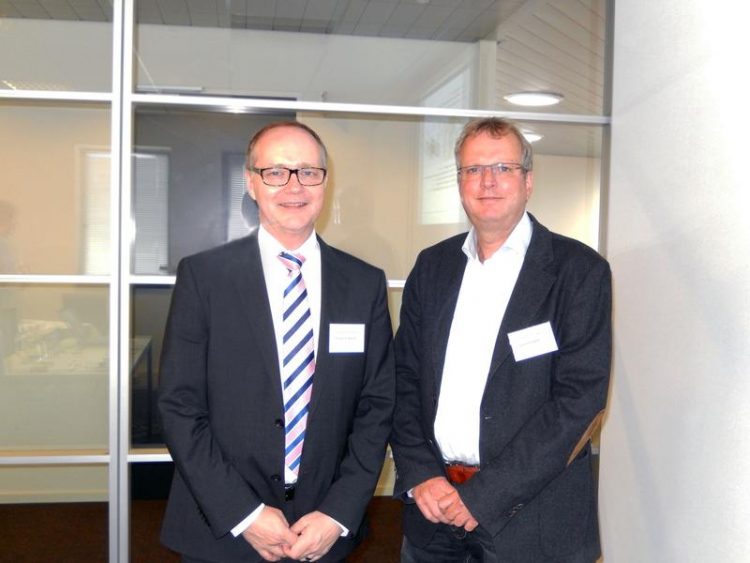ΣYSTEMS INTEGRATION shows efficiency improvements through automation in microfluidics

Dr. Thomas R. Dietrich (IVAM) and Gerard Huiberts (WWINN) IVAM
Microfluidic components are already in use in analytics, medical diagnostics or chemical manufacturing with great success. Even so, microfluidic hardware always requires automated control technology.
In his keynote Gerard Huiberts of WWINN was able to impressively illustrate his robots’ capabilities at the manufacture of microtechnological components: Even most complex production stages are entirely automated and can be achieved with great cost-effectiveness.
Automation is essential not only in manufacture, but also in the application of microfluidic components. Richard Bijlard of Invenios (USA) introduced the integration of sensors and actuators on a microfluidic chip and was backed by Dr. Hans van den Vlekkert of LioniX (NL) who focused on optical sensors. ”
Professor Volker Hessel of Eindhoven UT illustrated a host of applications from chemistry that would not be possible without microfluidic components. The fact that these components then need to be integrated into larger systems presents another challenge for automation engineering. Ronny van’t Oever of micronit microfluidics (NL) argued in favor of standardizing the micro-macro-interface.
The event was rounded out by Professor Han Gardeniers with a tour of Enschede’s renowned MESA+ Institute. Professor Gardeniers pointed out the advantages of microfluidic systems for analysis – especially of very small sample sizes – e.g. in forensics.
ΣYSTEMS INTEGRATION is an annual conference focused on the processing and integration of micro-components. Next year, ΣYSTEMS INTEGRATION will be held at VTT, Finland’s largest research facility, and will focus on ‘3D printing’.
Media Contact
All latest news from the category: Life Sciences and Chemistry
Articles and reports from the Life Sciences and chemistry area deal with applied and basic research into modern biology, chemistry and human medicine.
Valuable information can be found on a range of life sciences fields including bacteriology, biochemistry, bionics, bioinformatics, biophysics, biotechnology, genetics, geobotany, human biology, marine biology, microbiology, molecular biology, cellular biology, zoology, bioinorganic chemistry, microchemistry and environmental chemistry.
Newest articles

A universal framework for spatial biology
SpatialData is a freely accessible tool to unify and integrate data from different omics technologies accounting for spatial information, which can provide holistic insights into health and disease. Biological processes…

How complex biological processes arise
A $20 million grant from the U.S. National Science Foundation (NSF) will support the establishment and operation of the National Synthesis Center for Emergence in the Molecular and Cellular Sciences (NCEMS) at…

Airborne single-photon lidar system achieves high-resolution 3D imaging
Compact, low-power system opens doors for photon-efficient drone and satellite-based environmental monitoring and mapping. Researchers have developed a compact and lightweight single-photon airborne lidar system that can acquire high-resolution 3D…





















